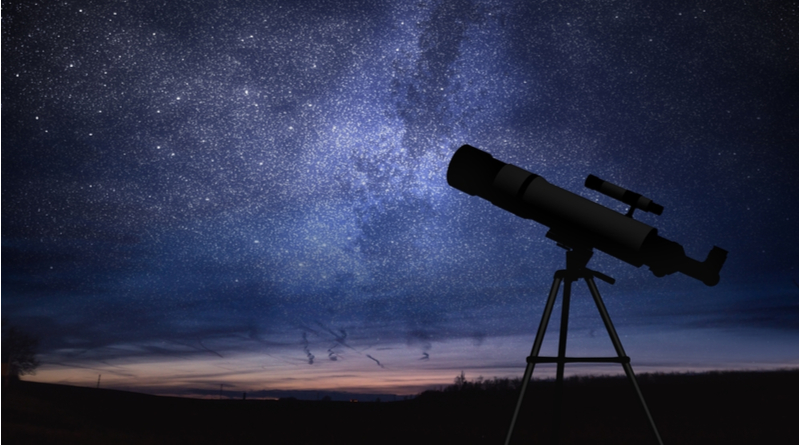What is Astronomy?
Astronomy is the study of everything in the universe that is beyond the Earth’s atmosphere. This includes objects we can see with our naked eyes such as the Sun, the Moon, the planets, and the stars as well as objects we can only see with telescopes or other instruments, like faraway galaxies and tiny particles.
Astronomers are scientists who observe and study the universe, its objects, and how it works. They aim to push the boundaries of human knowledge about how the universe works by observation and theoretical modeling.
What 3rd level courses are available?
Universities and colleges in Ireland are offering Astronomy courses in the following subject areas:
- Astronomy – This introductory astronomy course looks at the structure of stars and their life cycles, galaxies and quasars, and the origin and evolution of our universe.
- Introducing Astronomy – Explore astronomy and be amazed by planets, stars, stellar explosions, distant galaxies, extraterrestrial life, and the ‘big bang theory of the origin of the Universe.
- Astronomy: Elementary Course – This course will introduce you to topics such as Mapping the Skies, Constellations, and Practical observing Telescopes and equipment.
- Astrophysics – Explore the astrophysics of stars and exoplanets, examine their properties, structure, evolution, and the physical processes that occur within them.
- MSc in Astrophysics & Relativity – Gain advanced knowledge of astrophysics, general relativity, computational science, and data analysis and the up-to-date skills required to understand the universe we live in.
- CK 408 Physics and Astrophysics – The study of the science of the universe and all of its components.
Studying Astronomy in college
Many Astronomy courses take place over 1 year to 4 years depending on the course and modules selected. There are also part-time courses and night courses available so you can be sure to fit in your studies no matter what your schedule is like.
Courses will cover theory work through lectures, assignments, tutorials, and taught modules. Assessments will take place continuously with written examinations and practical assignments combined to achieve a qualification. You could also consider work experience or a work shadow at an observatory or astronomical museum that will give you an understanding of how to use the equipment and how data is collected.
Relevant work experience is a good way of demonstrating a genuine interest in the field and is regarded favorably by employers. The best way to find out if you’re well-suited for a career in research astronomy is to spend time doing research. Many university departments offer summer placements for undergraduate students, and undergraduate students can sometimes be involved with research alongside their studies.
Work Experience will not only allow you to obtain a deeper knowledge and understanding of the industry, but it will also give you a chance to do some essential networking with other industry professionals and gain valuable contacts for the future.
Career options
After completing a course in Astronomy you will be able to get started in a career that uses specific knowledge of the universe and everything that can be found beyond the atmosphere of the Earth.
Astronomy research requires a solid understanding of physics, mathematics, and statistics, and in some sub-disciplines, knowledge of chemistry or geology may be advantageous.
Careers in astronomy are diverse, including roles such as planetary geologists, astrobiologists, cosmologists, and telescope design engineers. Some institutions hire public engagement specialists, where your role as an astronomer includes sharing knowledge and developing programs for school children and the wider public.
The majority of astronomers are employed by universities, but there are a few government and private institutions (such as observatories) that hire astronomers. Permanent positions in both astronomy research and outreach can be competitive, so you may have to consider moving internationally to pursue this career.
Working hours will depend on whether you are employed by a company with set business hours or if you are contracted to various facilities or companies. The hours are generally longer than the typical 37-hour week, and the hours can sometimes be irregular. Although some astronomers do physically carry out observations overnight, this type of research is increasingly becoming rare. Often data is collected by remote and space-based telescopes and sent online, allowing the data to be analyzed during normal working hours.
Related jobs include:
- Academic researcher
- Astronomer
- Clinical scientist
- Geophysicist
- Higher education lecturer
- Metallurgist
- Meteorologist
- Nanotechnologist
- Research scientist
- Data analyst
- Nuclear engineer
- Operational researcher
- Software engineer
- Telecommunications researcher
Further study
After completing a course in Astronomy you may choose to pursue further study in a specialist field to increase your knowledge base and skillset. Postgraduate study can also be used as a means to change career focus or to gain professional qualifications required to practice in certain career areas such as Astrophysics, Geology, and Earth sciences, Physics, Mathematics, or Computer Science.
If you’re interested in astronomical instrumentation, either for research telescopes or space missions, then engineering degrees are often a prerequisite.
FAQ
Why is the study of Astronomy important?
The main work of astronomy is to explain puzzling features of the universe and to help us understand the universe.
Since the 20th century, there have been two main types of astronomy, observational and theoretical astronomy. Observational astronomy uses telescopes and cameras to observe or look at stars, galaxies, and other astronomical objects. Theoretical astronomy uses maths and computer models to explain the observations and predict what might happen.
Working together, theories predict what should happen and observations show whether the predictions work.
Where can I study Astronomy?
Explore your options here
Did You Know?
· The Moon is lemon-shaped, with flattened poles and bulges on both the near and far sides around its equator.
· On Mercury, a day lasts twice as long as a year. Technically, one Mercurian day lasts 59 Earth days, while a year lasts 88. However, due to Mercury’s very eccentric orbit and alignment with the Sun, the length of time from sunrise to sunrise, known as a ‘solar day’, is equal to 176 Earth days — twice as long as a Mercurian year.
· A neutron star is a star composed almost entirely of neutrons packed together in a tiny radius. Just a teaspoonful of this material would weigh over a trillion kilograms
· There are stars we will never be able to see. Ever since the Big Bang, most objects in space have been moving away from one another and cosmic expansion is accelerating, meaning the first population of stars to form in the Universe are now too far away for us to ever hope of spying them.
· Jupiter’s moon Io has towering volcanic eruptions. The Jovian moon has hundreds of volcanoes and is considered the most active moon in the solar system, sending plumes up to 250 miles into its atmosphere.












Comments